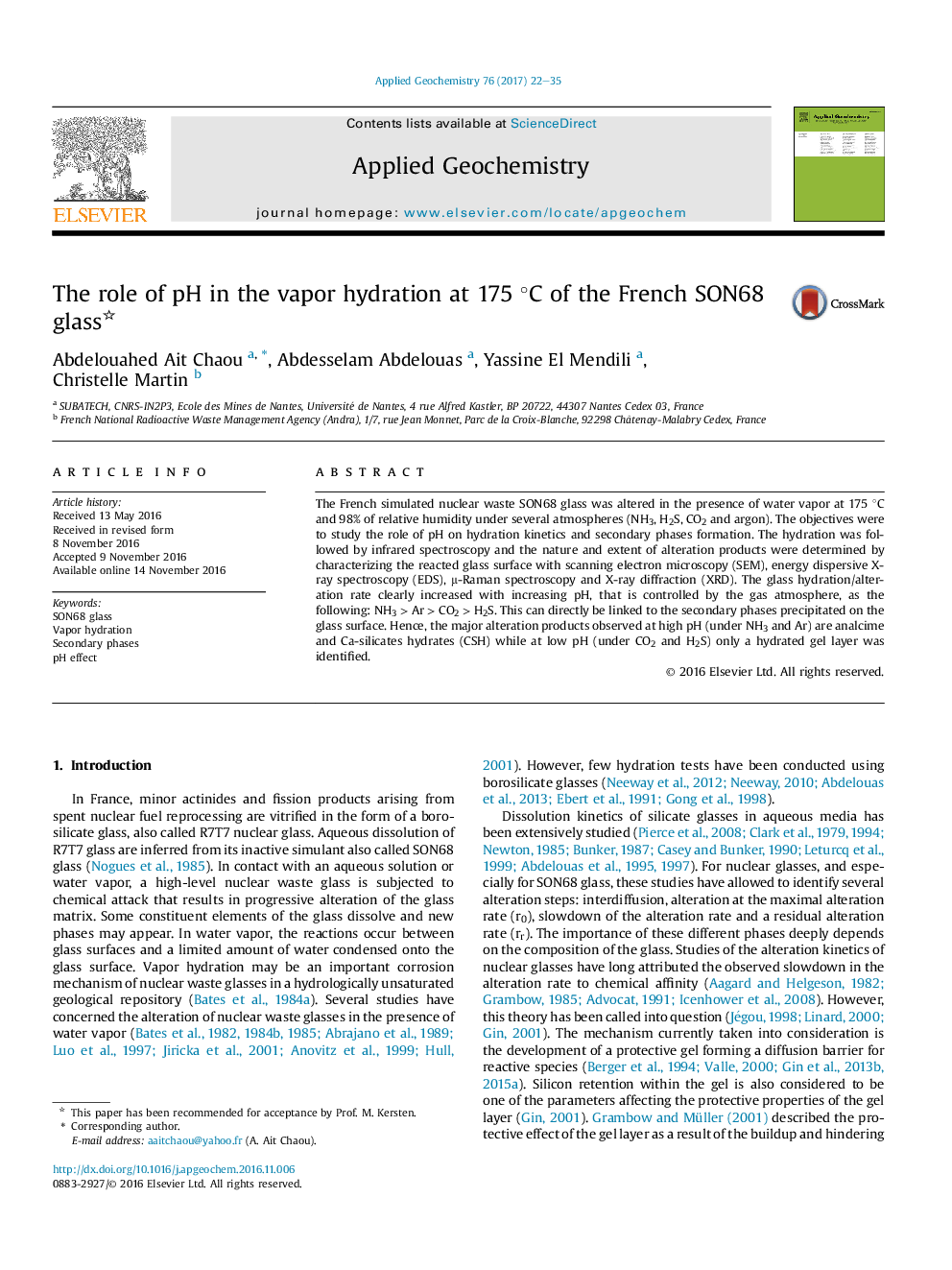| Article ID | Journal | Published Year | Pages | File Type |
|---|---|---|---|---|
| 5752615 | Applied Geochemistry | 2017 | 14 Pages |
Abstract
The French simulated nuclear waste SON68 glass was altered in the presence of water vapor at 175 °C and 98% of relative humidity under several atmospheres (NH3, H2S, CO2 and argon). The objectives were to study the role of pH on hydration kinetics and secondary phases formation. The hydration was followed by infrared spectroscopy and the nature and extent of alteration products were determined by characterizing the reacted glass surface with scanning electron microscopy (SEM), energy dispersive X-ray spectroscopy (EDS), μ-Raman spectroscopy and X-ray diffraction (XRD). The glass hydration/alteration rate clearly increased with increasing pH, that is controlled by the gas atmosphere, as the following: NH3 > Ar > CO2 > H2S. This can directly be linked to the secondary phases precipitated on the glass surface. Hence, the major alteration products observed at high pH (under NH3 and Ar) are analcime and Ca-silicates hydrates (CSH) while at low pH (under CO2 and H2S) only a hydrated gel layer was identified.
Keywords
Related Topics
Physical Sciences and Engineering
Earth and Planetary Sciences
Geochemistry and Petrology
Authors
Abdelouahed Ait Chaou, Abdesselam Abdelouas, Yassine El Mendili, Christelle Martin,
